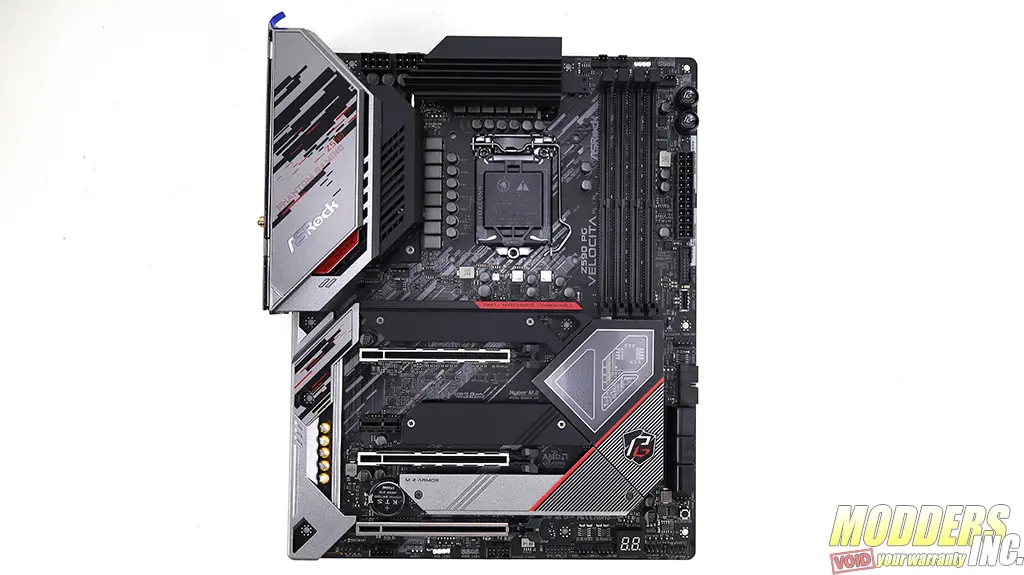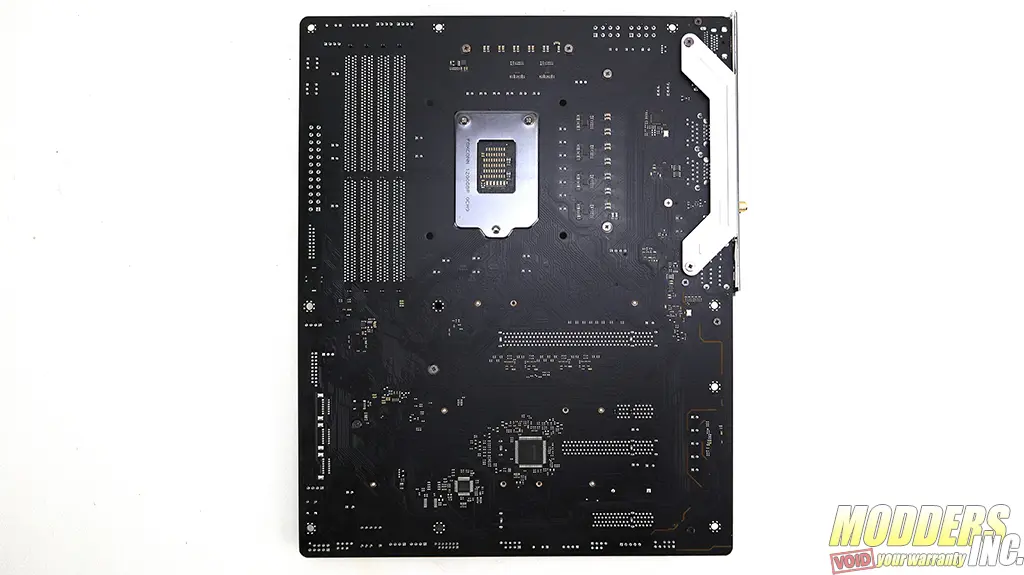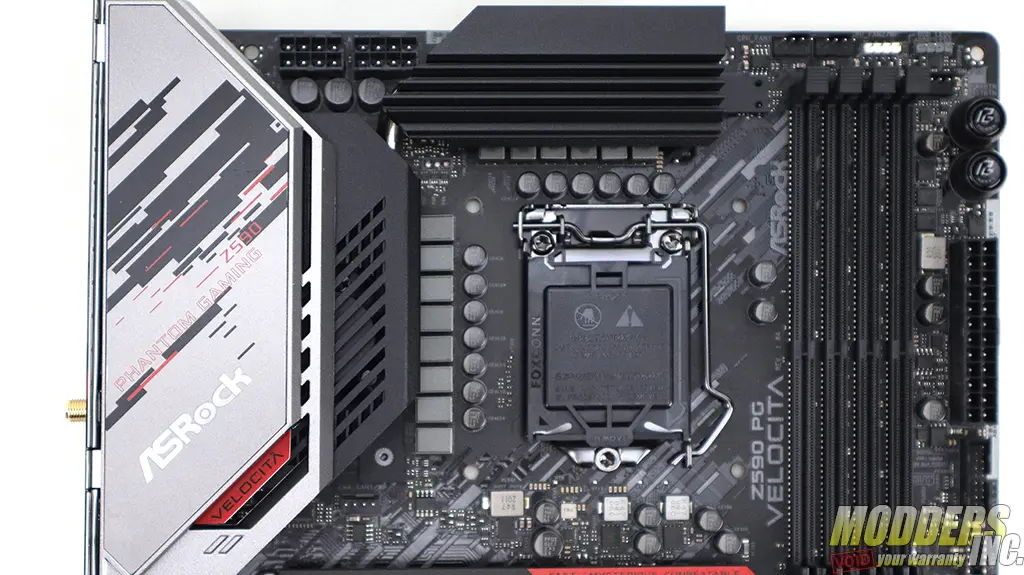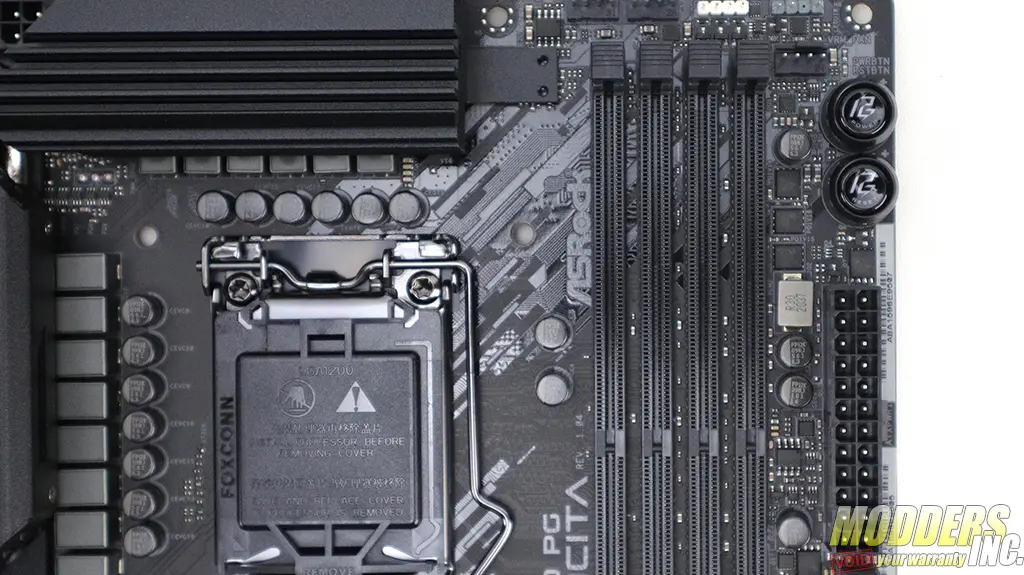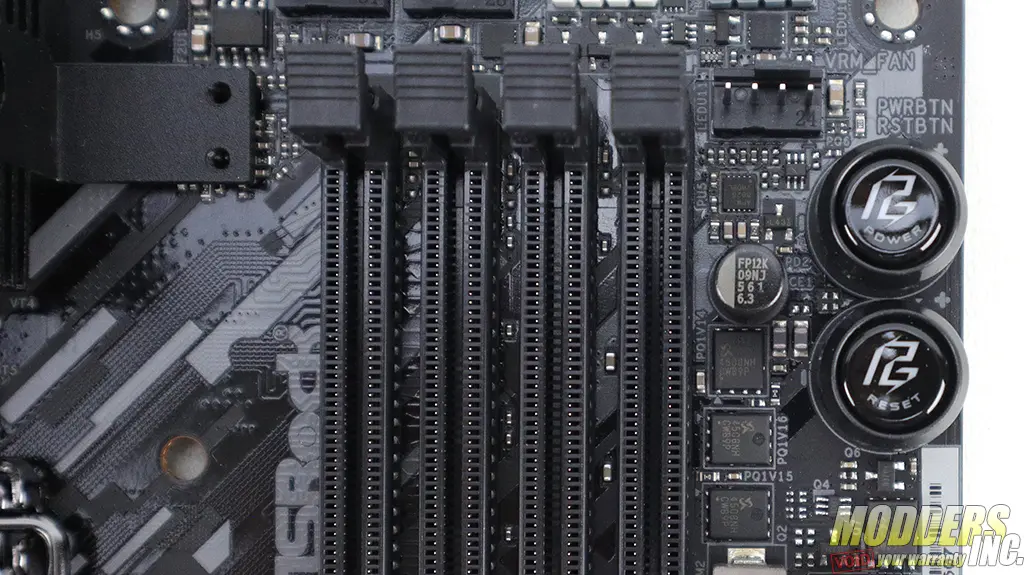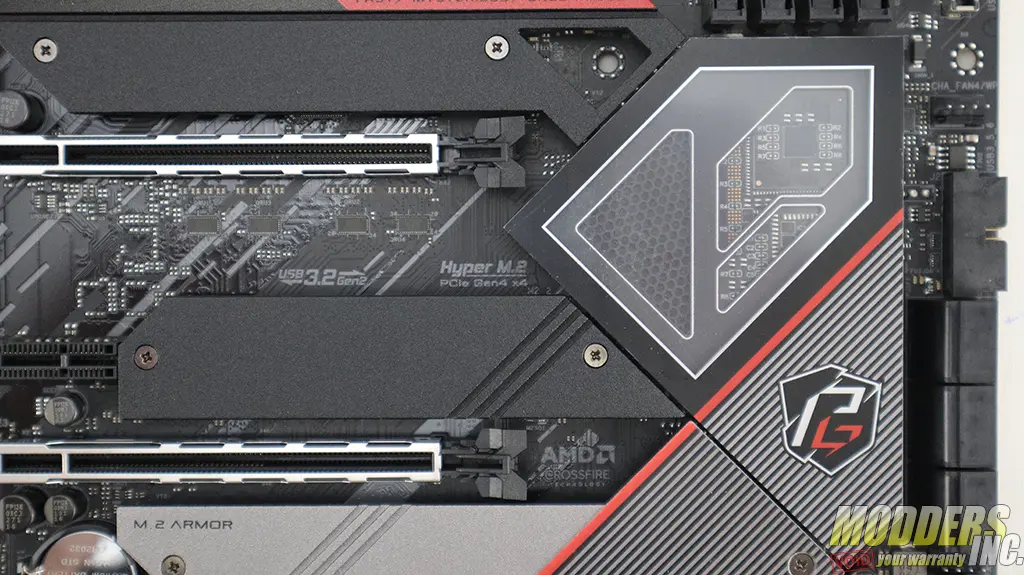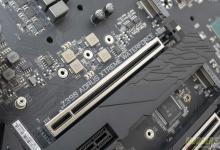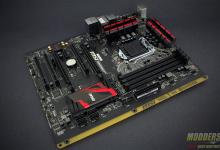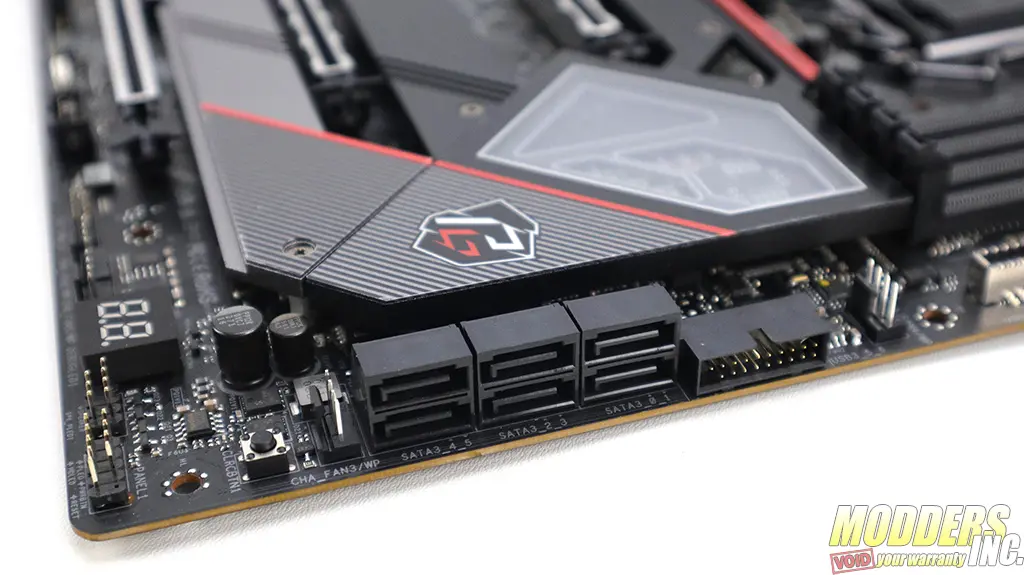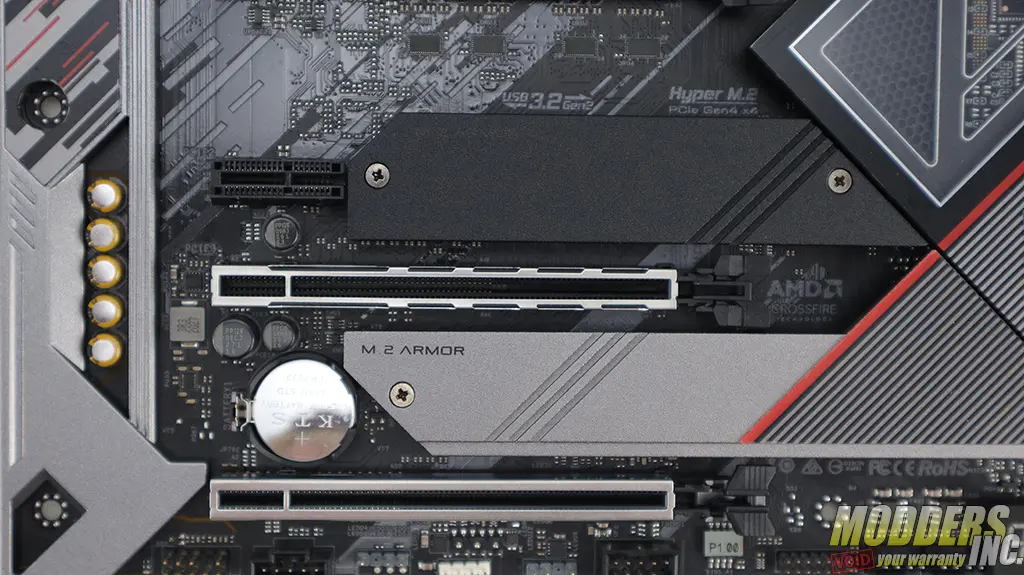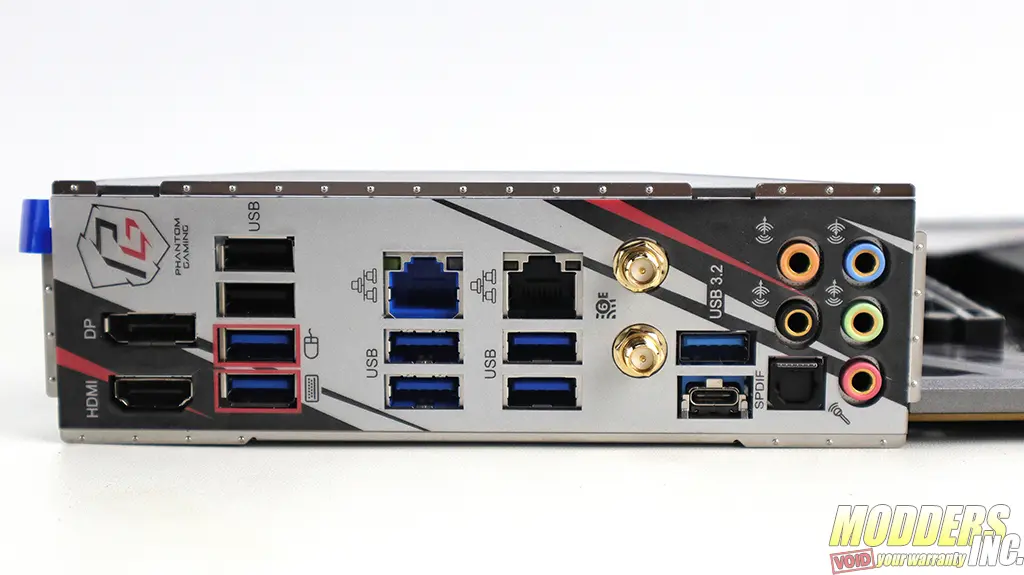New ASRock Z590 PG Velocita Motherboard Review
A Closer Look at ASRock Z590 PG Velocita
Z590 PG Velocita has a standard ATX size of 30.5cm by 24.4 cm so you should be able to fix this board into any ATX case without a problem. The motherboard has a standard 2 Oz layer copper when it comes to PCB boards. On the front of the board, there are aluminum heatsinks that cover MOSFETs. There is one built-in fan that cools the heatsinks on the left of the CPU socket however, ASRock included a small 30mm fan with a support bracket if you choose to use it for the top heatsink. It is recommended but not required to operate the motherboard. There is a socket support plate on the back of the motherboard and four mounting holes for the cooler to be installed.
ASRock Z590 PG Velocita supports 10th Gen Intel and 11th Gen Intel processors (LGA 1200). This board has a 12+2 power phase design. I did not install the additional fan but you can see its mounting holes on the aluminum heatsink in the picture below. The board also has two eight-pin motherboard power connectors for additional power but you can power this board with only one eight-pin power connector without being penalized. Velocita also supports Intel Turbo Boost Max 3.0 Technology and the ability to run K series (unlocked) processors.
There are four DDR4 RAM slots to accommodate RAM moduled up to 4800MHz speed if overclocked. A list of supported RAM modules could be found on ASRock’s website. On the right of the RAM slots, two buttons can quickly power on and reset the system if needed right from the board. I find this very handy when pushing clock speeds of the RAM/CPU. Velocita is equipped with three M.2 slots. Two slots are Gen 3 x4 and one slot is Gen 4 x4. To be able to use Hyper M.2 (Gen 4 x4) slot Velocity needs to be paired up with 11th Gen Intel CPU. For a supported list of CPUs please refer to ASRock’s website.
There are six SATA3 connections on Velocita. Not all of them can be used alongside M.2 modules. For instance, if you would like to use the Hyper M.2 module it would disable SATA3_0 and 1 SATA ports. If you would like to use bottom M.2 then SATA3_3 will be disabled. Velocita also has three full metal-reinforced PCIe slots and one PCIe mini.
The number of lanes for the PCIe slots varies based on the CPU and CPU Direct Source LAN configuration. CPU Direct Source Lan is a patented technology that allows control of the network connection directly by the CPU. By having direct access to the network adapter this way instead of through the network chipset the performance of networking can be greatly improved and minimalization of latency can be achieved. In short CPU Direct Source LAN can greatly benefit any gamer with fast ethernet speed with less lag. But with this feature (when enabled) PCI lanes take the hit.
Here what you should expect:
With CPU Direct Source LAN Off (default)
- 11th Gen Intel CPU – 3 x PCI Express x16 Slots (PCIE1/PCIE3/PCIE4: single at Gen4x16 (PCIE1); dual at Gen4x8 (PCIE1) / Gen4x8 (PCIE3); triple at Gen4x8 (PCIE1) / Gen4x8 (PCIE3) / Gen3x4 (PCIE4))
- 10th Gen Intel CPU – 3 x PCI Express x16 Slots (PCIE1/PCIE3/PCIE4: single at Gen3x16 (PCIE1); dual at Gen3x8 (PCIE1) / Gen3x8 (PCIE3); triple at Gen3x8 (PCIE1) / Gen3x8 (PCIE3) / Gen3x4 (PCIE4))
With CPU Direct Source LAN On
- 11th Gen Intel CPU – 3 x PCI Express x16 Slots (PCIE1/PCIE3/PCIE4: single at Gen4x8 (PCIE1); dual at Gen4x8 (PCIE1) / Gen4x4 (PCIE3); triple at Gen4x8 (PCIE1) / Gen4x4 (PCIE3) / Gen3x4 (PCIE4))
- 10th Gen Intel CPU – 3 x PCI Express x16 Slots (PCIE1/PCIE3/PCIE4: single at Gen3x8 (PCIE1); dual at Gen3x8 (PCIE1) / Gen3x4 (PCIE3); triple at Gen3x8 (PCIE1) / Gen3x4 (PCIE3) / Gen3x4 (PCIE4))
M.2 slots are covered by the aluminum heatsinks that will help with heat distribution and protect M.2 modules from accidental damage. The Realtek audio chipset in Velocita offers ALC1220 Audio Codec that offers 7.1 Chanel HD Audio. The chipset is partially covered by the plastic bezel that covers the left side of the motherboard.
As I mentioned earlier the IO panel of Velocita is non-removable. The Phantom Gaming color scheme and a small logo are a good touch here. The IO panel offers Display Port and HDMI graphics (only supported Intel CPU offer Video capabilities), two USB 2.0 connections, six USB 3.2 Gen 1 connections, Killer 2.5G Ethernet and Intel Gigabit Ethernet connectors, two Killer WiFi 6e antenna, one USB 3.2 Gen 2 Type-A and one type C connectors, SPDIF and Realtek audio IO ports.
